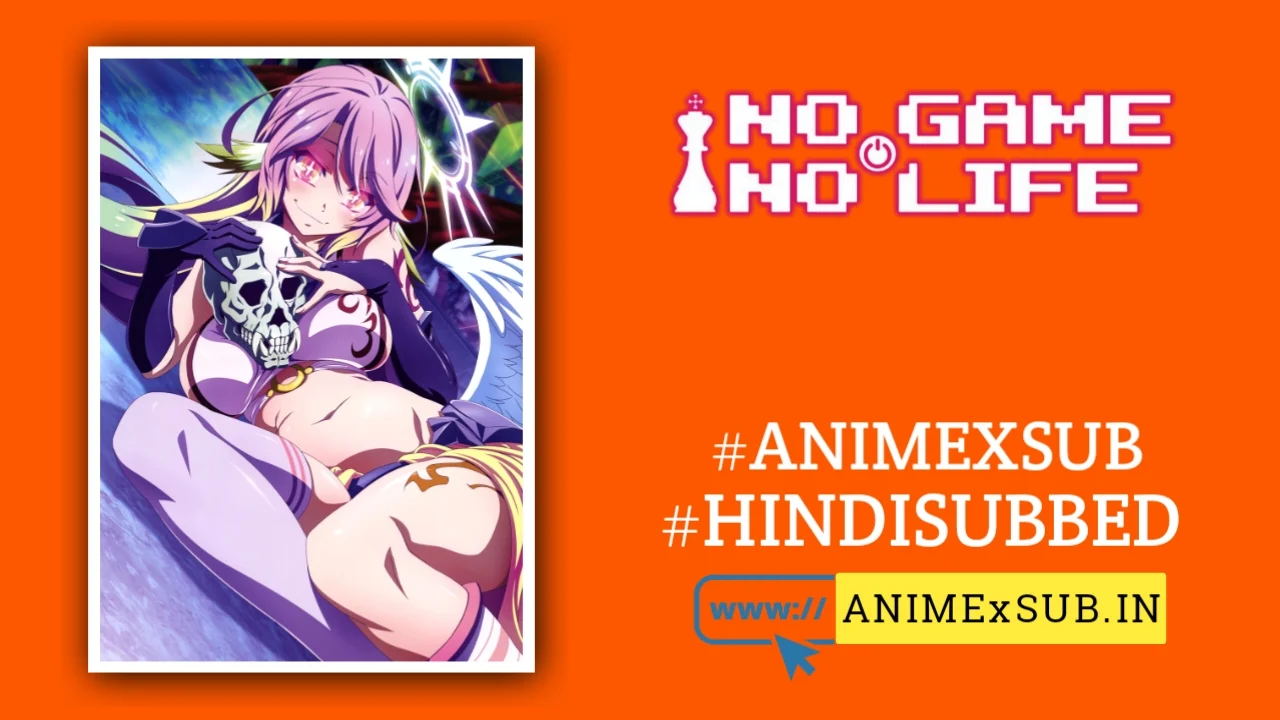
K-ON! Season 1 Hindi Subbed [13/13] | K-No! Hindi Sub

K-ON!
K-ON!Synopsis
Hirasawa Yui, a young, carefree girl entering high school, has her imagination instantly captured when she sees a poster advertising the ‘Light Music Club’. Being the carefree girl that she is, she quickly signs up. However, Yui has a problem, she is unable to play an instrument. When Yui goes to the clubroom to explain, she's greeted by the other members: Ritsu, Mio and Tsumugi. Although disheartened at Yui’s lack of musical know-how, they still try to convince her to stay to prevent the club’s disbandment. After playing Yui a short piece which re-ignites her imagination, they succeed in keeping their new member and guitarist. Along with the tasks of school and homework, Yui begins to learn the guitar with the help of the other band members, experiencing many mishaps along the way. However, with the school-festival drawing near and Yui getting stuck with her practice, will the Light Music Club be ready in time for their debut? (Source: MAL Rewrite)
Watch Trailer
Characters
Episodes
How To Download Tutorial
K-On! Season 1: A Heartfelt Symphony of Friendship and Music
K-On! Season 1 (2009), produced by Kyoto Animation, is a 13-episode anime that redefines the slice-of-life genre with its deceptively simple premise: four high school girls form a light music club to save it from disbandment. Based on Kakifly’s manga, the series blends humor, character growth, and understated emotional depth, creating a cultural touchstone that resonates far beyond its “cute girls doing cute things” surface. This article explores why K-On! Season 1 is a masterclass in storytelling, animation, and thematic nuance, offering insights into its unique strengths without veering into promotional hype.
A Subtle Narrative Revolution
At first glance, K-On! appears to follow a familiar formula: a group of quirky teens—dreamy Yui Hirasawa, responsible Mio Akiyama, energetic Ritsu Tainaka, and gentle Tsumugi Kotobuki—join a struggling high school music club. Their goal? To perform as a band, Houkago Tea Time. Yet, the show subverts expectations by prioritizing character-driven moments over plot-driven milestones. The narrative thrives on small, authentic interactions—tea breaks, banter, and practice sessions gone awry—rather than dramatic arcs. This choice mirrors life’s quiet beauty, where growth happens in mundane moments.
The series’ pacing is deliberate, almost meditative. Episodes linger on everyday scenes, like Yui struggling to tune her guitar or the girls debating snacks, but these moments are never filler. They build a tangible sense of camaraderie, making the eventual musical performances—like the climactic school festival—feel earned and emotionally weighty. K-On! Season 1 teaches that stories don’t need high stakes to be profound; the stakes here are personal, rooted in friendship and self-discovery.
Characters That Feel Alive
The heart of K-On! lies in its ensemble. Each girl is distinct yet complementary, their personalities clashing and harmonizing like notes in a chord. Yui, the airheaded guitarist, brings infectious optimism, her scatterbrained nature masking a quiet determination to improve. Mio, the shy bassist, balances vulnerability with maturity, her stage fright adding depth to her reserved demeanor. Ritsu, the drummer and club president, is a chaotic spark, her impulsiveness tempered by loyalty. Tsumugi, the keyboardist, exudes warmth but subtly grapples with her sheltered upbringing. Later, the addition of Azusa Nakano, a serious-minded junior, shakes up the dynamic, highlighting the group’s strengths and flaws.
What sets these characters apart is their authenticity. Kyoto Animation avoids archetypes by giving each girl quirks and contradictions—Yui’s clumsiness coexists with her musical intuition, Mio’s composure cracks under pressure. Their growth feels organic, driven by small victories, like Yui mastering a chord or Mio overcoming her fear of performing. The show never rushes their development, letting their bonds deepen naturally through shared laughter and setbacks.
Visual and Audial Brilliance
Kyoto Animation’s craftsmanship elevates K-On! to a visual and auditory masterpiece. The animation is vibrant yet restrained, with soft pastels and fluid character movements that capture the girls’ personalities. Yui’s exaggerated gestures contrast Mio’s subtle blushes, while Tsumugi’s elegant poise shines in quiet scenes. Backgrounds, from the cozy clubroom to cherry-blossom-lined streets, evoke nostalgia, grounding the story in a tangible world.
The music, a cornerstone of the series, is surprisingly polished for a “high school band.” Songs like “Cagayake! GIRLS” and “Don’t Say ‘Lazy’” blend catchy J-pop with rock elements, reflecting the girls’ playful yet earnest spirit. The soundtrack, composed by Hajime Hyakkoku, weaves acoustic melodies and upbeat tracks, enhancing the show’s emotional range. Sound design is meticulous—guitar strums, teacup clinks, and ambient chatter immerse viewers in the clubroom’s warmth.
Themes That Resonate
K-On! Season 1 explores themes of friendship, purpose, and the fleeting nature of youth. The light music club isn’t just a setting; it’s a metaphor for finding belonging in a transitional phase of life. The girls’ journey—balancing school, practice, and personal insecurities—mirrors the universal struggle to carve out identity. The show doesn’t preach; it shows how small moments, like sharing cake or laughing over a failed rehearsal, forge unbreakable bonds.
The series also captures the bittersweet passage of time. The school festival performance in Episode 12, where the girls play “Fuwa Fuwa Time,” is a triumphant yet poignant reminder that high school is temporary. This undercurrent of impermanence gives K-On! emotional weight, making its lighthearted moments feel precious.
Cultural Impact and Legacy
K-On! Season 1 sparked a wave of “moe” anime, but its influence transcends the genre. It popularized the slice-of-life formula, inspiring shows like Yuru Camp and Non Non Biyori, yet few match its balance of humor and heart. The series’ focus on female friendship, free of romantic subplots, feels refreshing, emphasizing platonic love as a narrative force. Its success also boosted Japan’s music industry, with Houkago Tea Time’s albums charting alongside real bands.
Why It Stands Out
Unlike many anime, K-On! Season 1 doesn’t rely on conflict or spectacle. Its power lies in its restraint, trusting viewers to find meaning in the everyday. The show’s humor—Ritsu’s teasing, Yui’s absurd one-liners—never overshadows its emotional core. It’s a rare series that feels both universal and deeply personal, inviting viewers to reflect on their own friendships and fleeting moments of youth.
Final Thoughts
K-On! Season 1 is a quiet triumph, a series that finds beauty in the ordinary and meaning in the mundane. Its characters, animation, and music create a world that feels lived-in, where every smile and strum resonates. For those who’ve ever found solace in friendship or chased a dream through small steps, K-On! is a reminder that life’s simplest moments can be its most powerful. Watch it, and you’ll hear the echo of your own high school days—tea, laughter, and all.




























